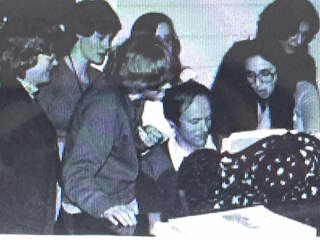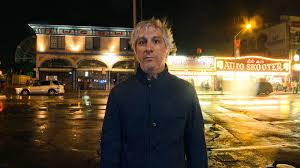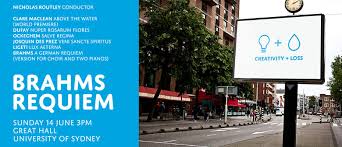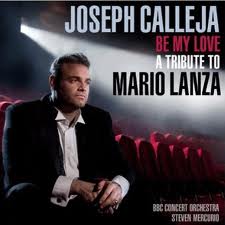Paul Stanhope: A Decade At The Helm Of The Sydney Chamber Choir
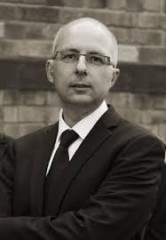
On the eve of his departure as Musical Director of the Sydney Chamber Choir, Paul Stanhope confesses that his initial efforts at programming were akin to ‘bolting out of the starting blocks’, curating an adventurous concert which he recalls attracted only a small audience.
A decade on, talking to SoundsLikeSydney, he says he has learnt from that experience. “The lesson was that we’ve got to take the audience with us – we’ve got to build from somewhere and so we’re at the point, now 10 years on, where the audience trusts us – trusts what the choir is about and the way we do things. This leaves us in a better position to do the new pieces and put unlikely things together. Now, the audience will come with us, but it did take an amount of building up and a gradual reassurance over that time period.”
Composer and conductor Dr Paul Stanhope took up his appointment as Musical Director of Sydney Chamber Choir in 2006. During his tenure he continued the choir’s traditional repertoire of performing Renaissance masterpieces as well as championing the music of contemporary Australian and international composers. He also initiated a series of innovative collaborations, creating new perspectives in choral music through partnerships with musicians like oud virtuoso Joseph Tawadros, harpist Marshall McGuire, and ensembles Match Percussion, the Adelaide Chamber Singers and Continuum Sax.
As a composer, Stanhope won the 2004 Tōru Takemitsu Composition Award, he was Musica Viva’s Featured Composer in 2010 and in 2013 he was awarded a Sidney Myer Creative Fellowship for his contribution to Australian music. A Senior Lecturer in Composition at the University of Sydney, Stanhope has moved to the role of Artistic Director of the Australia Ensemble @UNSW, a highly regarded coterie of seven instrumentalists, founded in 1980. The ensemble tours nationally and internationally and frequently engages guests artists in performing both the classics and the new works of the chamber music canon.
Now working with instrumentalists after a decade with voices, I asked Paul Stanhope to what extent he would miss working with singers and whether his appointment heralded a vocal component to the activities of the Australia Ensemble.
“I inevitably will miss the choral side of things, but the role with the Australia Ensemble is really a fantastic one. It is an opportunity for me to increase my knowledge of the repertoire and to work with some of the best musicians in Australia – extraordinary quality musicians – and to develop a new understanding of chamber music. So far, a year into the job it’s been really fascinating and taking on a role beyond the Sydney Chamber Choir means that I can also freelance and be guest director for other groups.”
Now in its 40th year, the Sydney Chamber Choir has stood the test of time maturing from amateur to professional ensemble (although its singers are not paid) under Stanhope’s leadership. That process has included balancing the scales between a programme that is artistically challenging whilst pleasing the audience. Along the way, there are many more factors that come into play. “For example,” says Stanhope, “a programme with some well-known composer names is always useful but it’s not surprising and there are means of giving it that element of surprise. When we did the Mozart Requiem in 2009, we did it in an unusual way. We performed a version of the Requiem which Mozart left unfinished, completed by Australian composer Gordon Kerry. It was quite different to the version by Süssmayr that is usually performed. It was an interesting opportunity to do something that was unusual and traditional at the same time. That was one way that we were able to introduce the idea of adventure within something familiar which helped bring back some of the audience.”
“For that particular concert” Stanhope continues,”we had our new Musical Director, Richard Gill as guest conductor. His profile really helped boost the choir. We’ve invited him a number of times as guest director and now he’s actually taking over.”
He elaborates “We’ve dome some quite novel projects from collaborations with Joseph Tawadros, oud player, to saxophone quartet Continuum Sax, and last year, with The Idea of North performing the music of Björk – so these are really diverse and unusual things for choir to do and its worked for us.”
“We’ve never done a formal survey” he explains, referring to how he assesses the success of a programme, “but there has been a fair amount of social media feedback, word of mouth and testing the temperature from the audience reactions. It’s also about an artistic director needing to showing an amount of leadership as well and taking risks hoping that they pay off. The opposite of that is to take a conservative approach. I’ve seen a number of arts organisations go down that path and I’ve never been interested in going there.”
Artistic ideals + audience tastes….add to the equation, balancing a budget and meeting criteria set by funding bodies and Stanhope breathes a sigh of relief that he no longer has to submit two finding application annually. “Funds are scarce – always. It’s a constant struggle and funding applications are tremendously time-consuming. All sorts of boxes have to be ticked – boxes that you may not want to, as an organisation – but these policies are mandated by levels of government. In an ideal world, funding bodies would be more interested in listening to what creative organisations were interested in doing rather than about ticking the boxes” he continues.
“We’ve been fortunate for the last 3 to 4 years to get either one of two levels of government funding. It’s been comparatively rare to get both state and Arts Council funding. Each year we need to make up an amount of money and we do that with a commercial gig or two when we can.”
Although the level of funding hasn’t increased, the last decade has seen the business of selling a choir become more sophisticated and assets need to be channeled in new directions. “Our programme is more adventurous and requires more resources” says Stanhope. “We’re now paying an administrator and a publicist. This has meant more on the expense side of the ledger, so we’re also looking to build a system of patronage and are beginning a campaign of individual gift giving. There are a lot of organisations asking people for a limited amount of goodwill money and that’s a challenge in any environment. The Sydney Chamber Choir lives with nothing more than an annual funding guarantee – if policy changes, if government changes – then what we’ve planned to do (because we have to plan 18 months in advance) has to change and things can fall over. It’s a precarious environment.”
During March, there were two distinctly different choral events in Sydney with Harry Christophers and The Sixteen performing in traditional choral ‘stand and deliver’ style, followed by the semi-staged offering from William Christie, Les Arts Florissants and Le Jardin des Voix. The Sydney Chamber Choir for the most part has created a niche for itself in the former style. Asked if productions that included elements of staging and audio-visual displays put pressure on the kind of performance where one could simply close one’s eyes and concentrate on the music, Stanhope admits to being a purist. “There’s something in me that wants to let the music speak for itself. Programming interesting music, performing it and advocating it in an extremely sophisticated way is an art. I don’t necessarily discount the other ways of doing things – for example the Australian Chamber Orchestra is doing the Gallipoli tour with projected images and that’s very interesting and engaging. I can live in both worlds. At the same time I think that music alone is powerful enough for me.”
Inevitably I asked Paul Stanhope about highlights of his time with the Sydney Chamber Choir. He points to many, but settles on a few. “There were two international tours – one to Spain, participating in the Tolosa International Choral Festival followed by two weeks in the north of Spain which was a breathtakingly wonderful experience. We also did a tour in 2013, to Hong Kong and Taiwan. The opportunity to perform a programme a number of times on both those tours has really helped the development of the choir. We’ve also put on some really interesting things like collaborating with the with the Adelaide Chamber Singers a couple of times and found them to be a wonderful sister group, sharing a lot in common with them.”
Are there any crises he would care to recall? He laughs ruefully. “There are inevitably little problems along the way when you’re dealing with 24 to 30 volunteers. There have been times when we’ve really had to think about how we care for our people and how we organise our rehearsals. We’re all human but it can get complicated because we need to maintain standards. It’s not a community choir in the sense that anyone can join – it’s a choir that needs to maintain its quality and so there is a tension between looking after people’s well-being and ensuring the highest quality performance that we can deliver. It has been the source of some angst over the years. There’s no easy solution for this but the issues are something that we’ve tried to work through together as a choir and as a team.”
Despite the singers having to pass a rigorous audition process, they are not paid for their services. Stanhope recognises that the singers invest a lot of their time, energy and livelihood into performing with the choir. “It’s a tricky thing to ask a chorister to leave. There have been a couple of times when we’ve had to do that just because we aim for the highest standards that we can offer – those have been the hardest things for me as Musical Director.”
As he looks back on his decade with the Sydney Chamber Choir, it is the relationships that are foremost amongst his memories. “It’s been an absolutely amazing journey with the choir – they’re my great friends and colleagues and I can’t think of a more satisfying thing to do – it’s been a great ten years.”
Shamistha de Soysa for SoundsLikeSydney©
The Sydney Chamber Choir directed by Paul Stanhope performs Passion + Resurrection on Sunday March 29th, 2015. Click here for more information.



